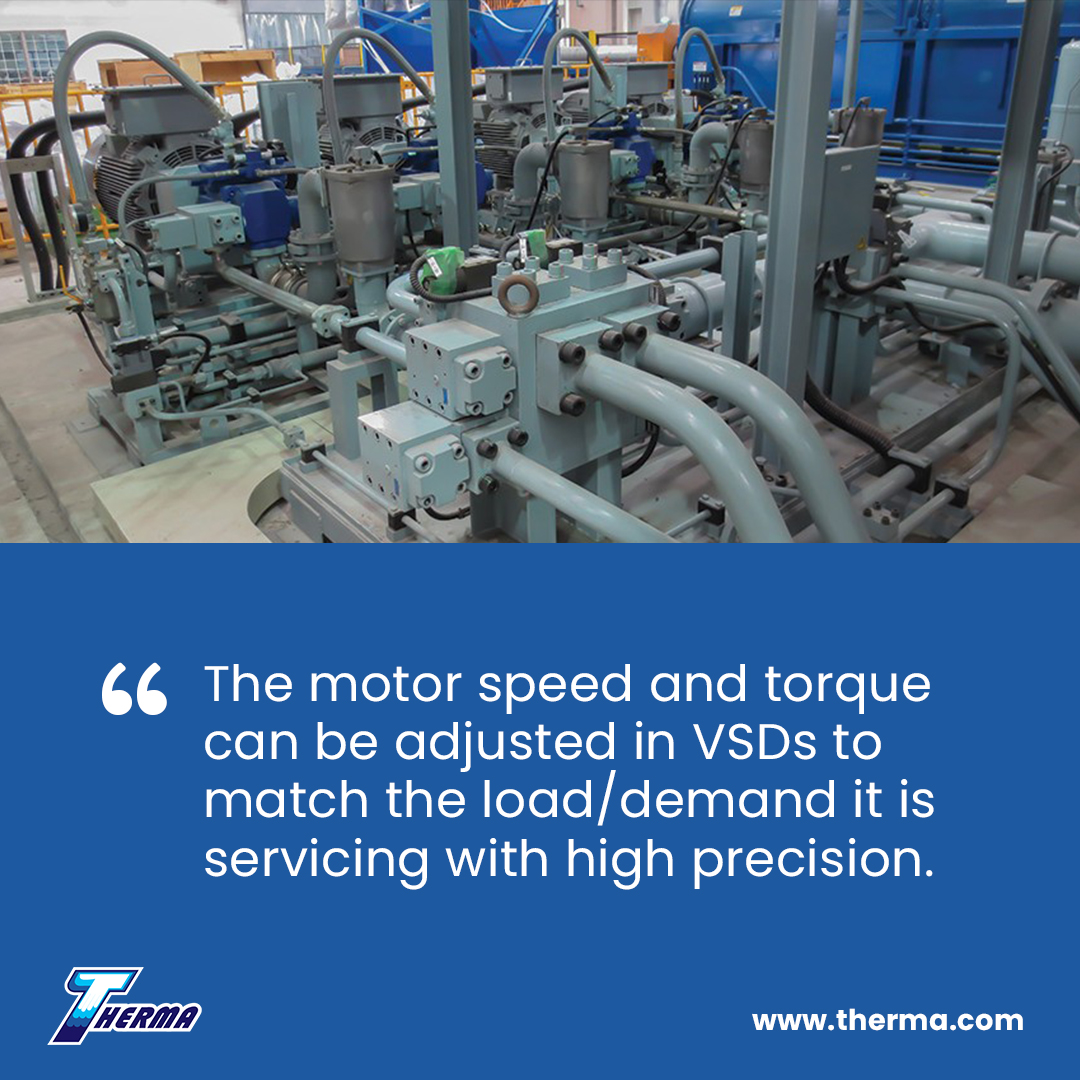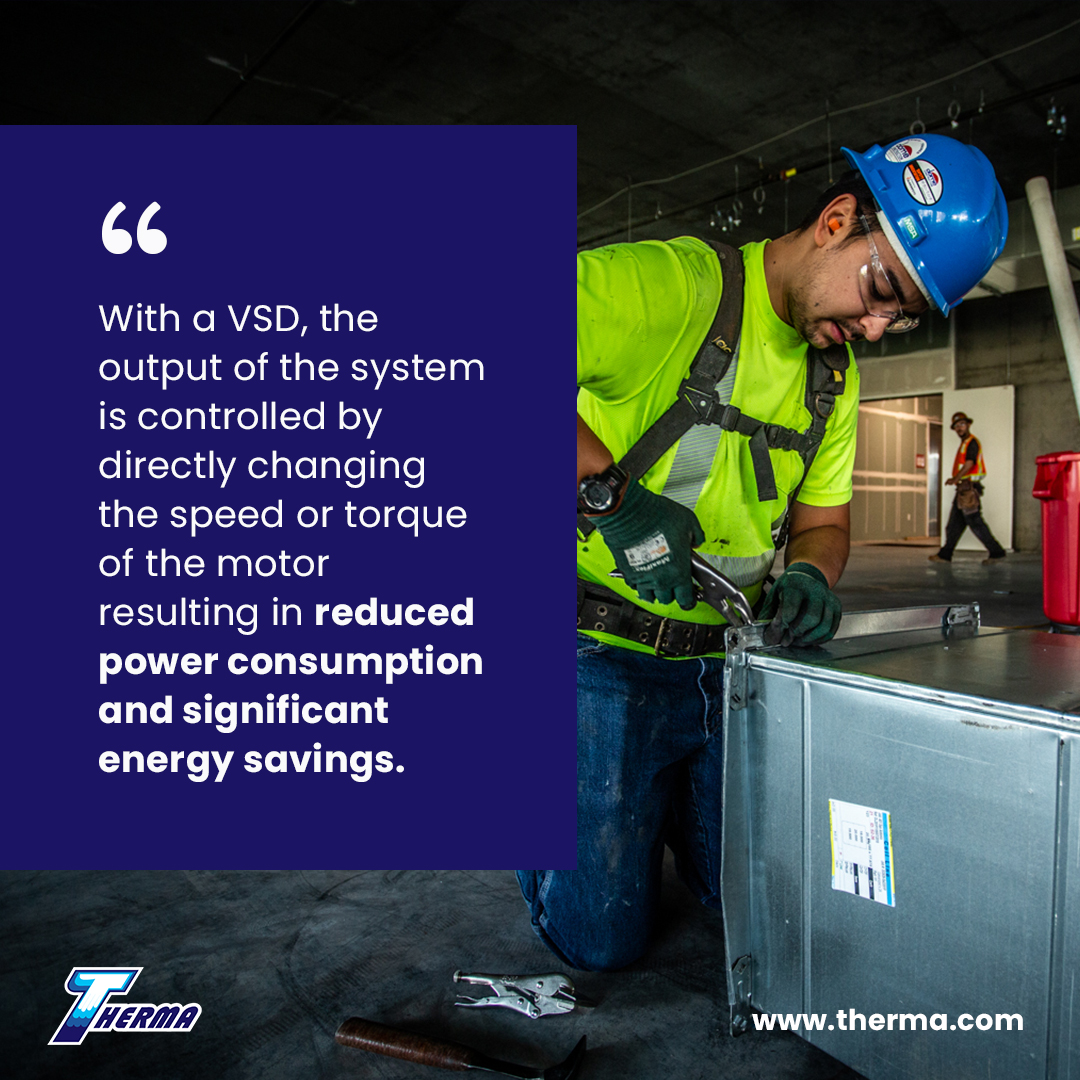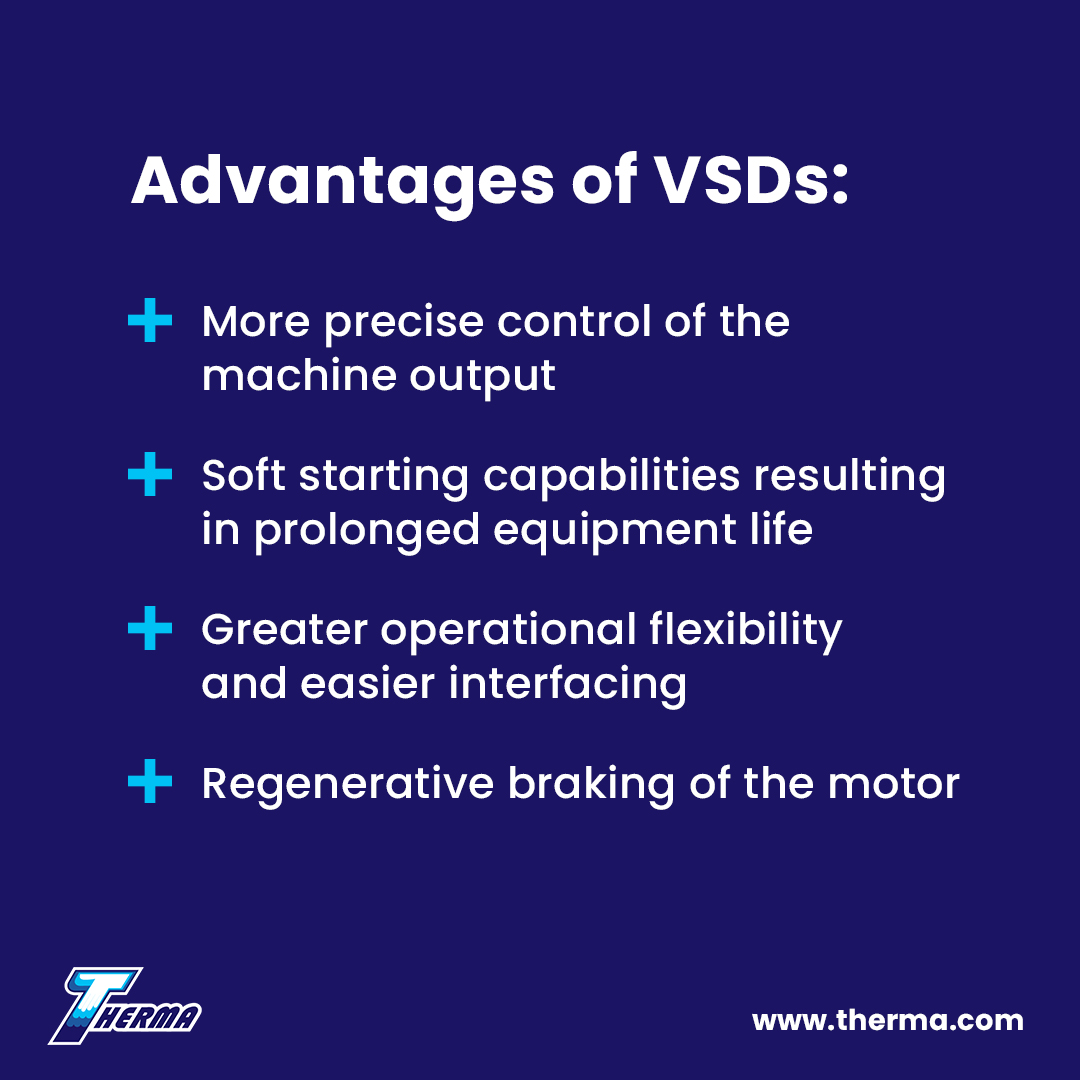Variable Speed Drives (VSDs) are electronic power controllers that allow for precise control of the speed and torque of alternating current (AC) induction motors that typically run at fixed speeds. AC induction motors drive a variety of rotating machines including fans, pumps and compressors and find application in most heating, ventilation and air-conditioning (HVAC) systems.
How Do VSDs Work?

In AC induction motors, an alternating electric current is passed through a series of electromagnets to create a rotating magnetic field that is used to drive a shaft. The rotational speed and torque of the motor depends on the frequency and voltage of the supply. Since most electricity supplies are at fixed frequency and voltage, the speed and torque of induction motors connected directly to a conventional electricity source will also be constant.
VSDs are installed in series with the motor and intercept the incoming electricity supply. The internal circuitry of the VSD modifies the incoming voltage and AC frequency based on the load requirements, and the modified AC current is supplied to the motor. In this way, the motor speed and torque can be adjusted to match the load / demand it is servicing with high precision.
Why VSDs?

In the absence of a VSD, an AC induction motor driven machine operates at a fixed speed and the output is controlled by external mechanical means (vents, valves, brakes etc) which effectively dissipate energy. The motor continues to run at full speed regardless of the demand resulting in poor efficiency. With a VSD, the output of the system is controlled by directly changing the speed or torque of the motor resulting in reduced power consumption and significant energy savings.
Consider the fan in a building HVAC system as an example:
Without a VSD the fan operates at a constant speed and vents are used to control the flow rate of air delivered to the building. The vents work by changing the so-called minor losses in the distribution system such that the flow rate is reduced at the constant fan speed. The vents are effectively dissipating or deliberately “wasting” energy to achieve the desired flow rate and the efficiency of the system is poor when the air supply demands are low.
In contrast, a VSD can control the fan speed in response to the demand. When the demand decreases, the flow rate can be reduced by slowing the fan, effectively reducing the energy input to the flow, rather than mechanically increasing the losses in the system. This results in less energy being wasted and therefore higher efficiency.
Advantages

In addition to the potential energy saving benefits of VSDs, other advantages include more precise control of the machine output, soft starting capabilities resulting in prolonged equipment life, greater operational flexibility and easier interfacing with wider process control systems (such as Building Management Systems), and regenerative braking of the motor.
Best Application For Energy Savings
VSDs are best suited to variable torque loads, which include components such as fans and pumps, which often operate at part load. In these components power consumption is proportional to the operating speed cubed and significant energy savings can be realized by reducing the motor speed.
In constant torque load situations (e.g. conveyors, air compressors), power consumption is directly proportional to motor speed and measureable energy savings can be achieved with VSDs if partial load operation is common. VSDs are not beneficial in constant power load systems such as machine tools.
Consideration should be given to the amount of time the system is expected to operate at part load since the efficiency of the VSD itself, although typically high, can incur a slight penalty under full load operation.
By Michael Owen, PhD
Michael is a mechanical engineer working in academia. His research encompasses various aspects of fluid dynamics and heat transfer with a strong emphasis on industrial heat exchangers.
Sources:
- https://www.allaboutcircuits.com/textbook/alternating-current/chpt-13/tesla-polyphase-induction-motors/
- https://www.engineersedge.com/fluid_flow/minor_losses.htm
- https://circuitglobe.com/induction-motor-braking.html
- https://www.energy.gov/sites/prod/files/2014/04/f15/motor_tip_sheet11.pdf
- https://electrical-engineering-portal.com/why-do-we-need-variable-speed-drives-vsd
- http://www.eskom.co.za/sites/idm/EnergyAdvisory/Documents/ASVSDGenericFactsheet.pdf







